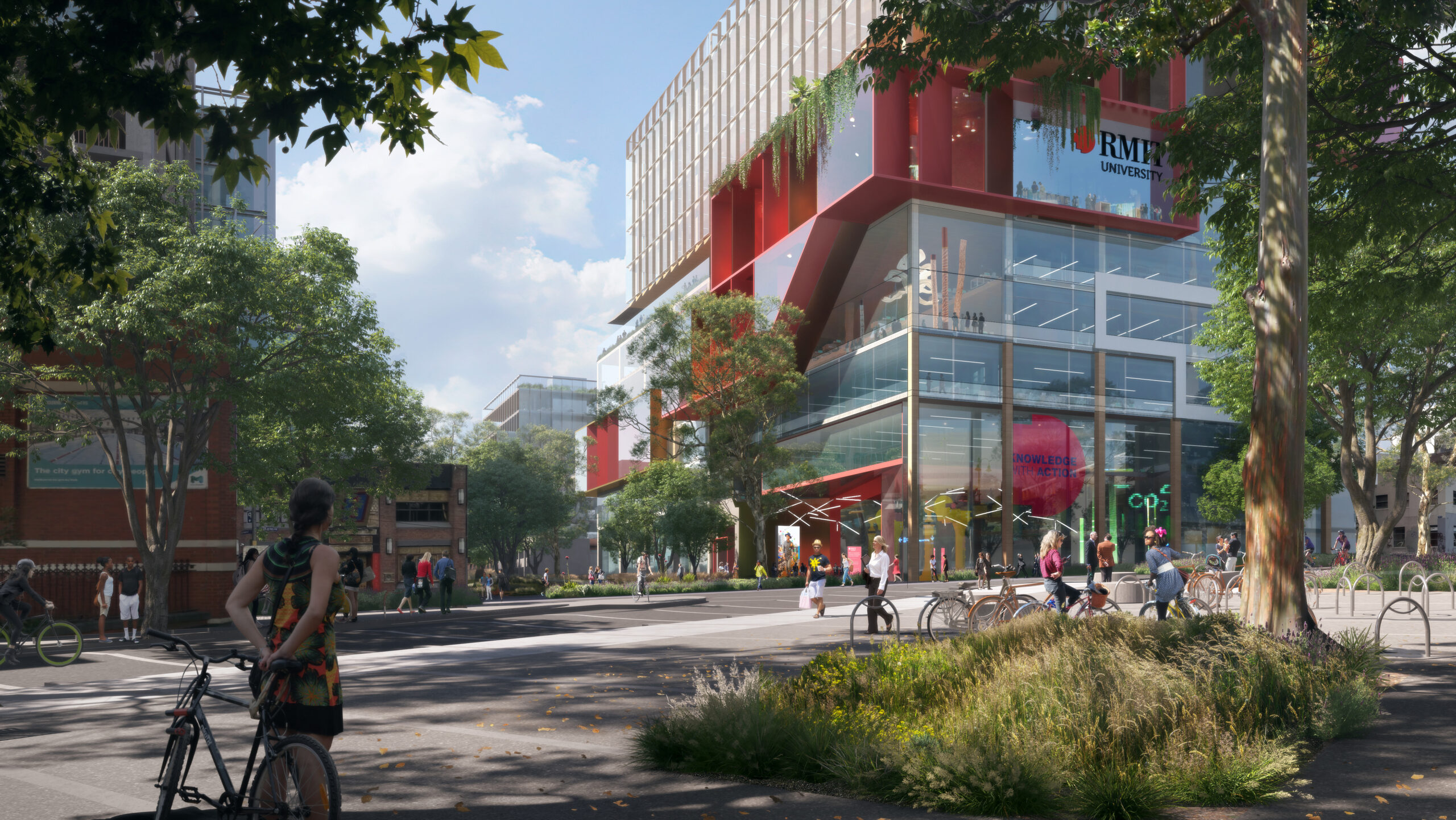The vision for City North is to transform the area into a world leading Social Innovation Precinct. The precinct will meet demand for skills in priority sectors and contribute to Melbourne’s innovation landscape through its unique combination of vocational and higher education, innovation, community engagement and industry collaboration.
The vision builds on a strong foundation of skills delivery, leading applied innovation and research centers and industry and community partnerships and programs already housed in City North.
The site is on the land of the Woi Wurrung language group of the Eastern Kulin Nation and formed part of an important cultural landscape in which the Woi Wurrung gathered resources, cared for country, and interacted with other Aboriginal groups. Its renewal offers an opportunity to build further connections with truth-telling, community engagement and cultural heritage in this part of the city.
The Social Innovation Precinct will be a place where the future of social care and wellbeing is reimagined, where smart and sustainable city-shaping is brought to life.
The Social Innovation Precinct will be a place where the future of social care and wellbeing is reimagined, where smart and sustainable city-shaping is brought to life, where the next generation of engineering and manufacturing leaves the lab and enters the workplace, and the potential of deep technology is put to work in solving complex problems ranging from mental health and medical implants to cyber-security and inter-cultural understanding. The precinct will be connected to Asia, and the world, by leveraging decades of Asia engagement and expertise developed by RMIT, along with our partners including the University of Melbourne and the Asia Society.
The skills and innovation focus for the precinct will be clustered in three sectors:
- Social care and wellbeing
Delivering critical training in nursing, aged care, disability, and other areas of workforce shortage. Driving innovation in human services and healthcare in response to diverse community needs and an aging population. Co-locating human services, NGO partners and ethical businesses. Prototyping and connecting health, housing and social services to digital and engineering capabilities. - Clean economy
Growing sustainability skills to support clean energy and transport, construction, and the circular economy. Providing access to small scale prototyping spaces, developing centres of excellence and innovation in electrification. Making the precinct a living lab for smart, sustainable urban planning and climate change adaptation. - Future engineering, computing and manufacturing
Growing digital and engineering skills and industry partnerships that contribute to innovation across sectors. Developing critical technology expertise in automation, cloud, AI and fabrication technologies. Supporting the pivot from traditional manufacturing to tech-enabled future manufacturing and re-skilling workers. Providing inclusive access to digital skills.
Sector innovation will be underpinned by RMIT’s deep technology capability and commitment to and network across Asia.
- Deep technology
Ensuring the that next wave of technologies deliver social and economic benefits. Building capability and applying emerging technologies including quantum computing, biofabrication and nanotechnology to solve important challenges. Bringing together design, prototyping and translation facilities and networks. - Regional impact
Leveraging RMIT’s well-established presence and networks across the Asia Pacific and ASEAN. Providing a front door to Asia for Victorian business and engagement. Expanding a landing pad for new regional talent and investment into Melbourne.

Artist’s impression by MGS Architects